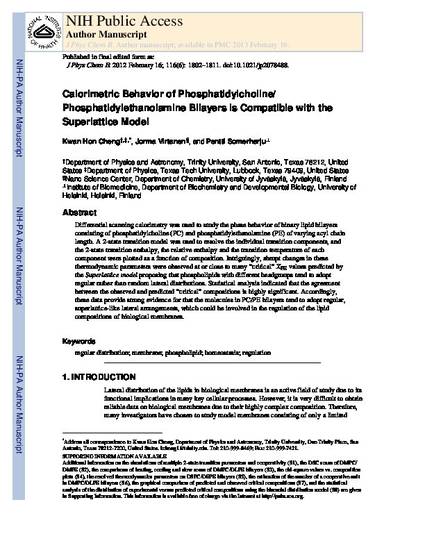
Differential scanning calorimetry was used to study the phase behavior of binary lipid bilayers consisting of phosphatidylcholine (PC) and phosphatidylethanolamine (PE) of varying acyl chain length. A two-state transition model was used to resolve the individual transition components, and the two-state transition enthalpy, the relative enthalpy, and the transition temperature of each component were plotted as a function of composition. Intriguingly, abrupt changes in these thermodynamic parameters were observed at or close to many “critical” XPE values predicted by the superlattice model proposing that phospholipids with different headgroups tend to adopt regular rather than random lateral distributions. Statistical analysis indicated that the agreement between the observed and predicted “critical” compositions is highly significant. Accordingly, these data provide strong evidence that the molecules in PC/PE bilayers tend to adopt regular, superlattice-like lateral arrangements, which could be involved in the regulation of the lipid compositions of biological membranes.
